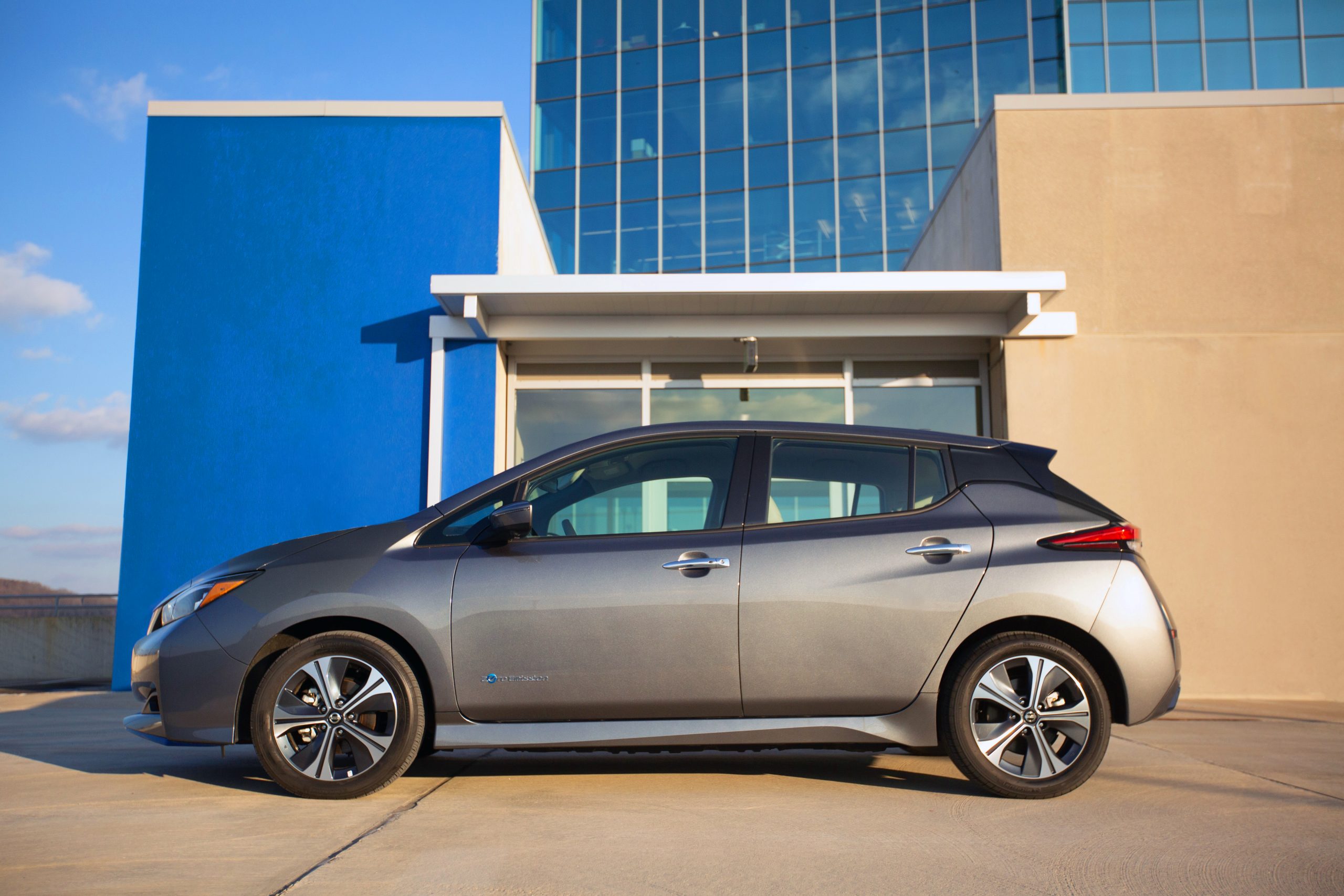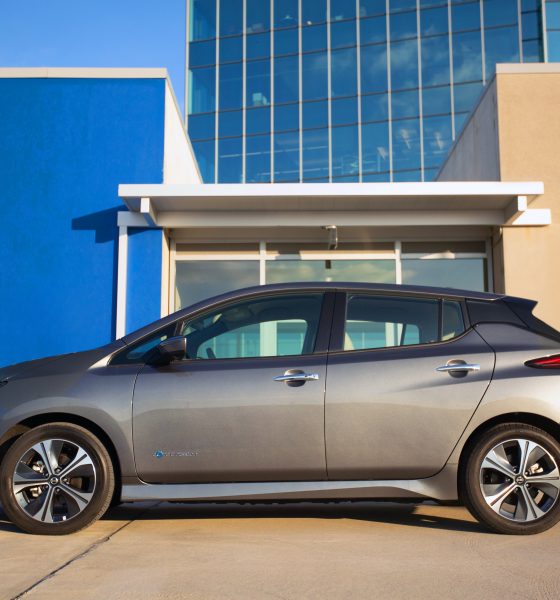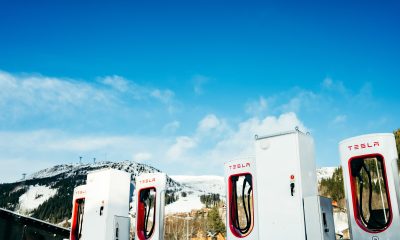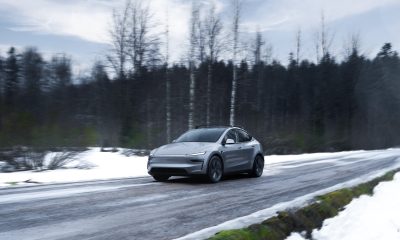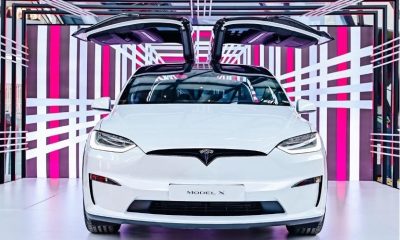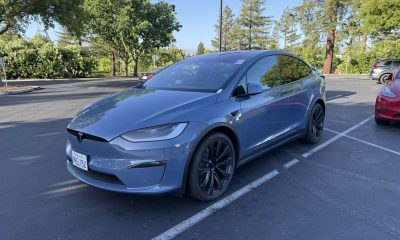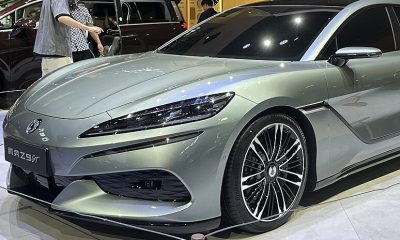Amidst an industry-wide transition to electric vehicles (EVs), Japanese automaker Nissan is the latest to announce a total switch from internal combustion engine (ICE) automobiles, at least in one key market. By the end of the decade, Nissan will only sell EVs in Europe, a company executive said this week.
Nissan said on Monday that all of its new models arriving in Europe will be fully electric, and the company will only sell EVs in the market by 2030, according to Reuters. The company joins automakers such as Volvo, Ford and Stellantis, as well as Nissan partner Renault, which have made similar commitments in either Europe or globally.
“There is no turning back now,” Nissan CEO Makoto Uchida said of the Monday announcement. “Nissan will make the switch to full electric by 2030 in Europe — we believe it is the right thing to do for our business, our customers and for the planet.”
The company added that one of its two EV models confirmed for the European market will enter production at its Sunderland, England manufacturing facility. The statements also come after Nissan boosted its EV targets earlier this year with plans to debut 19 electric models by 2030. By fiscal year 2026, ending in March 2027, Nissan is aiming for 98 percent of its vehicle sales to be electric or hybrid.
Nissan was among the few major automakers to launch all-electric technology before it was popularized by Tesla. The Japanese automaker debuted the Nissan Leaf in 2010, though the company has more recently announced plans to phase the early EV out. Today, Nissan produces the Ariya EV, which faced some production issues earlier this year. The automaker also teased an EV conversion of the R32 Skyline GTR in March.
Additionally, Nissan joined several automakers and charging companies in officially adopting Tesla’s North American Charging Standard (NACS) over the summer, meaning future EVs for the North American market will include the U.S. automaker’s charging plug.
2022 Nissan LEAF becomes most affordable EV with sub-$30k MSRP
What are your thoughts? Let me know at zach@teslarati.com, find me on X at @zacharyvisconti, or send your tips to us at tips@teslarati.com.
Elon Musk
Tesla (TSLA) shareholders officially approve Elon Musk’s 2025 performance award
To earn his landmark pay package, Musk would be required to lift Tesla’s market capitalization from about $1.1 trillion today to $8.5 trillion over the next decade.
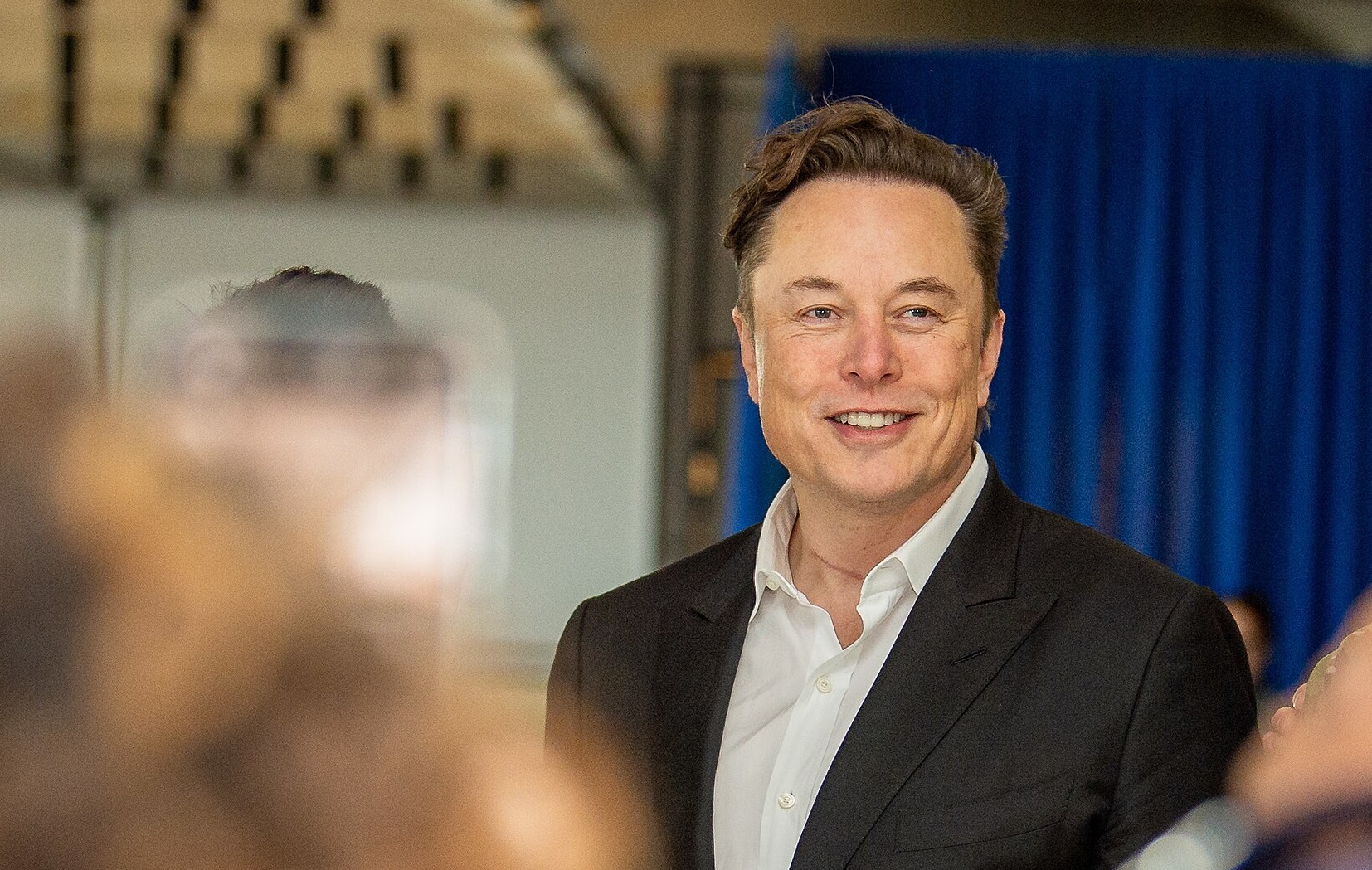
Tesla (NASDAQ:TSLA) CEO Elon Musk has officially approved his 2025 Performance Award, a landmark pay package that could make him the world’s first trillionaire and make Tesla the most valuable company in the world by a mile.
The 2025 CEO Performance Award was officially approved by Tesla shareholders at the 2025 Annual Shareholder Meeting.
Elon Musk‘s landmark pay package
As per Tesla, more than 75% of the shareholders approved Elon Musk’s 2025 CEO Performance Award. It was then unsurprising that the approval of Elon Musk’s pay plan received overwhelming applause from the event’s attendees.
The CEO took to the stage with much enthusiasm, welcoming every shareholder to the event and dancing briefly on stage. Optimus also danced on stage smoothly, demonstrating its improved movements to much appause.
Elon Musk’s 10-year targets
To earn his 2025 CEO Performance Award, Musk would be required to grow Tesla’s market capitalization from about $1.1 trillion today to $8.5 trillion over the next decade. At that level, Tesla would surpass every major public company in existence. The compensation plan also requires Tesla’s operating profit to grow from $17 billion last year to $400 billion annually.
Apart from leading Tesla to become the world’s biggest company in history, Musk is also required to hit several product targets for the electric vehicle maker. These include the delivery of 20 million Tesla vehicles cumulatively, 10 million active FSD subscriptions, 1 million Tesla bots delivered, and 1 million Robotaxis in operation.
Elon Musk
Tesla 2025 Annual Shareholder Meeting: How to watch
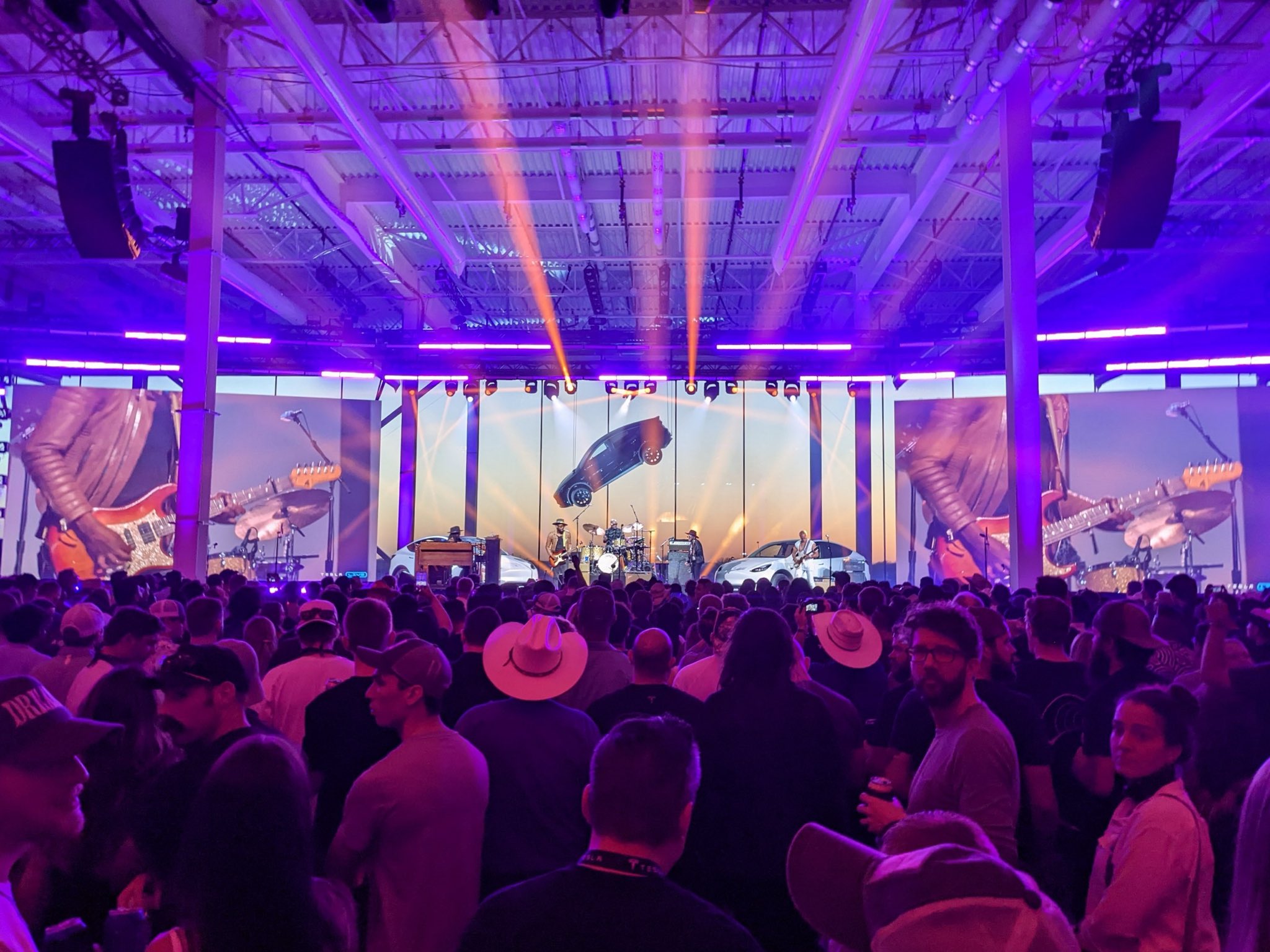
The 2025 Tesla Annual Shareholder Meeting from Gigafactory Texas is set to kick off at 4 p.m. EDT, 3 p.m. CDT.
The company will be having its typical presentation for the event, where CEO Elon Musk, along with other executives will discuss things like future products, the outlook of its self-driving development, potential releases for next year, and some current events within the company.
However, this year’s Shareholder Meeting has slightly more implications than others, as Investors and Shareholders have spent the last several months petitioning and supporting one of the proposals on the docket that could be the deciding factor in Musk staying or leaving Tesla.
Elon Musk’s new pay plan ties trillionaire status to Tesla’s $8.5 trillion valuation
Proposal four outlines a new compensation package for Musk that could give him $1 trillion in shares if he is able to complete a variety of lofty goals related to production, self-driving, and other important company projects.
Musk has said that he is truly after more influence on company decisions, especially as the Tesla Optimus program is ramping up and becoming a more relevant part of the company’s story.
The CEO said during the Q3 Earnings Call that he would not feel comfortable developing an “army of robots” if he did not have a comfortable amount of influence in some of the decisions. He could be voted our or out-influenced by what he calls “activist shareholders.”
One of those investors came after his past pay package, which was approved by shareholders not once, but twice. Musk still was not able to obtain the pay because of a Delaware Chancery Court ruling.
Nevertheless, this is one of the last ditch efforts Tesla is making to get Musk the compensation that he wants.
The meeting is set to kick off at 3 p.m. local time in Austin. You can watch it via the livestream on X:
Here is the link to Tesla’s 2025 Annual Shareholder Meeting:https://t.co/29dN4gkMWY
— TESLARATI (@Teslarati) November 6, 2025
News
Tesla Cybercab sightings on public roads are becoming more frequent
After it was unveiled a year ago by Tesla, the company has made some pretty drastic jumps in progress in terms of the Cybercab, but a recent development has truly pushed fans of the company to think it is probably going to be available soon.
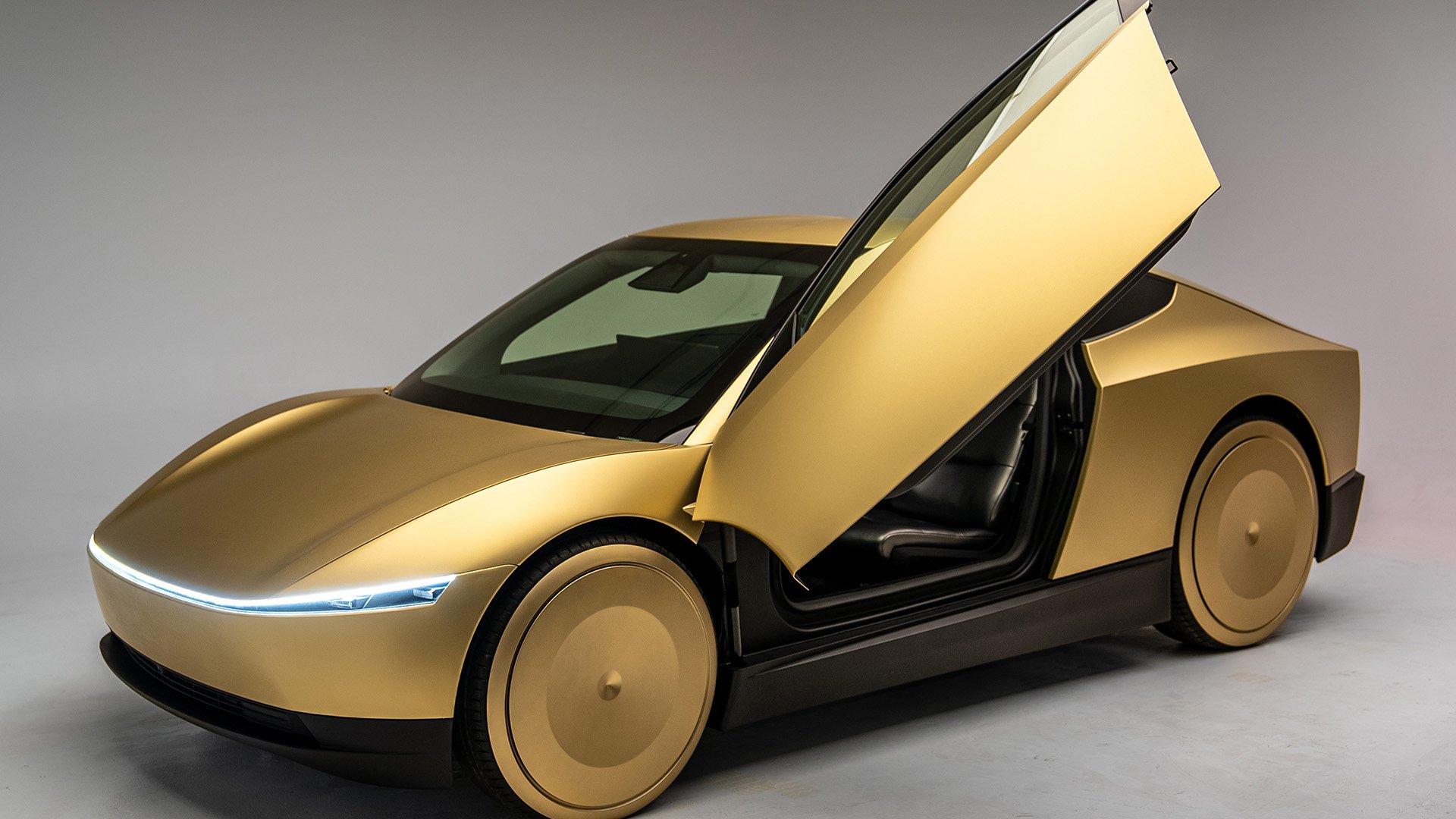
Tesla Cybercab sightings on public roads are becoming much more frequent, and they all are pointing to one thing: imminent production.
The Tesla Cybercab is the company’s vehicle developed for fully autonomous travel, as it will be manufactured without a steering wheel or pedals, according to CEO Elon Musk.
Tesla Robotaxi Cybercab: Seats, price, special features, release date, and more
After it was unveiled a year ago by Tesla, the company has made some pretty drastic jumps in progress in terms of the Cybercab, but a recent development has truly pushed fans of the company to think it is probably going to be available soon.
Last week, we reported on the first Cybercab sighting when the vehicle was finally being tested on public roads. The spotting was not a one-time deal, as we are now seeing many more sightings on public roads:
Saw it the other day pic.twitter.com/uv0geR6GIh
— Shareef Mahmoud (@saltyyshareef) November 6, 2025
The first spotting was in Palo Alto, just a few blocks from Tesla’s Engineering Headquarters in Los Altos. This second sighting appears to be relatively close to that first spotting, and it seems unlikely Tesla would be putting it on roads much further than that.
The public on-road testing of the Cybercab marks a major milestone in the entire project for Tesla. These early sightings and testing phases are usually followed by a lot of speculation about when the vehicle could end up in the hands of customers.
However, Tesla has already put a definitive date on when Cybercab production will begin, as Elon Musk said during the Q3 Earnings Call that it would roll off production lines in Q2 of next year.
But the speculation regarding the Cybercab is slightly different than other vehicles because Tesla has been developing it for fully autonomous travel; it’s not meant to be driven by humans but instead by software and the company’s Full Self-Driving suite.
Despite the vehicle being spotted with a steering wheel and pedals in the recent sightings, Musk has maintained that the Cybercab will not be developed with typical controls for a human. He recently confirmed this, and it does not seem the company is willing to veer too much from its plans for an autonomous car.
-
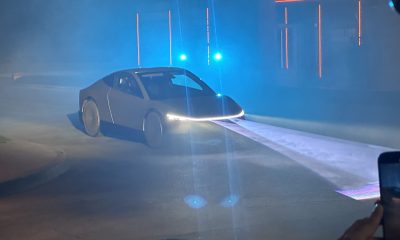
 News1 week ago
News1 week agoTesla Cybercab spotted testing on public roads for the first time
-
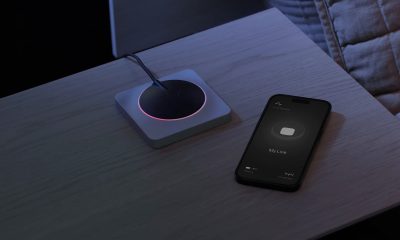
 Elon Musk6 days ago
Elon Musk6 days agoNeuralink’s first patient could receive an upgrade: Elon Musk
-
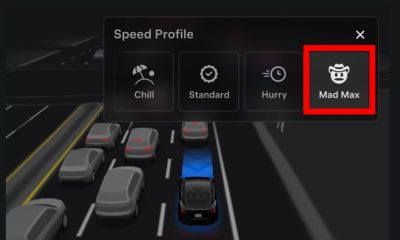
 News2 weeks ago
News2 weeks agoTesla ‘Mad Max’ gets its first bit of regulatory attention
-
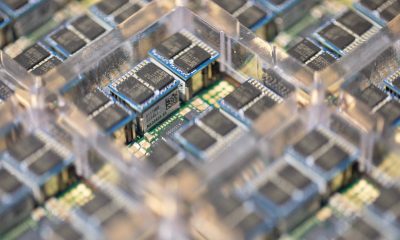
 News2 weeks ago
News2 weeks agoTesla reveals its plans for Hardware 3 owners who are eager for updates
-
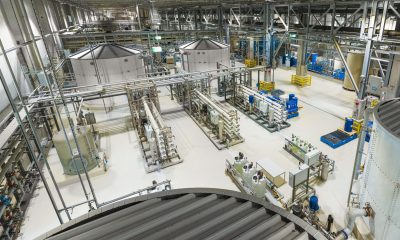
 News1 day ago
News1 day agoTesla Giga Berlin hits a sustainability milestone that’s so impressive, it sounds fake
-

 News7 days ago
News7 days agoNeuralink’s first human patient reflects on 21 months with brain implant “Eve”
-
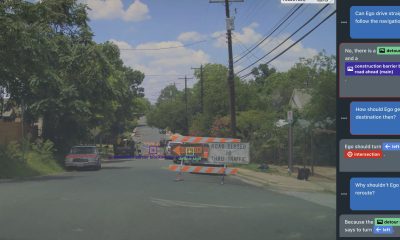
 News2 weeks ago
News2 weeks agoTesla VP explains why end-to-end AI is the future of self-driving
-

 News6 days ago
News6 days agoTesla Cybercab almost looks production ready in new photos

